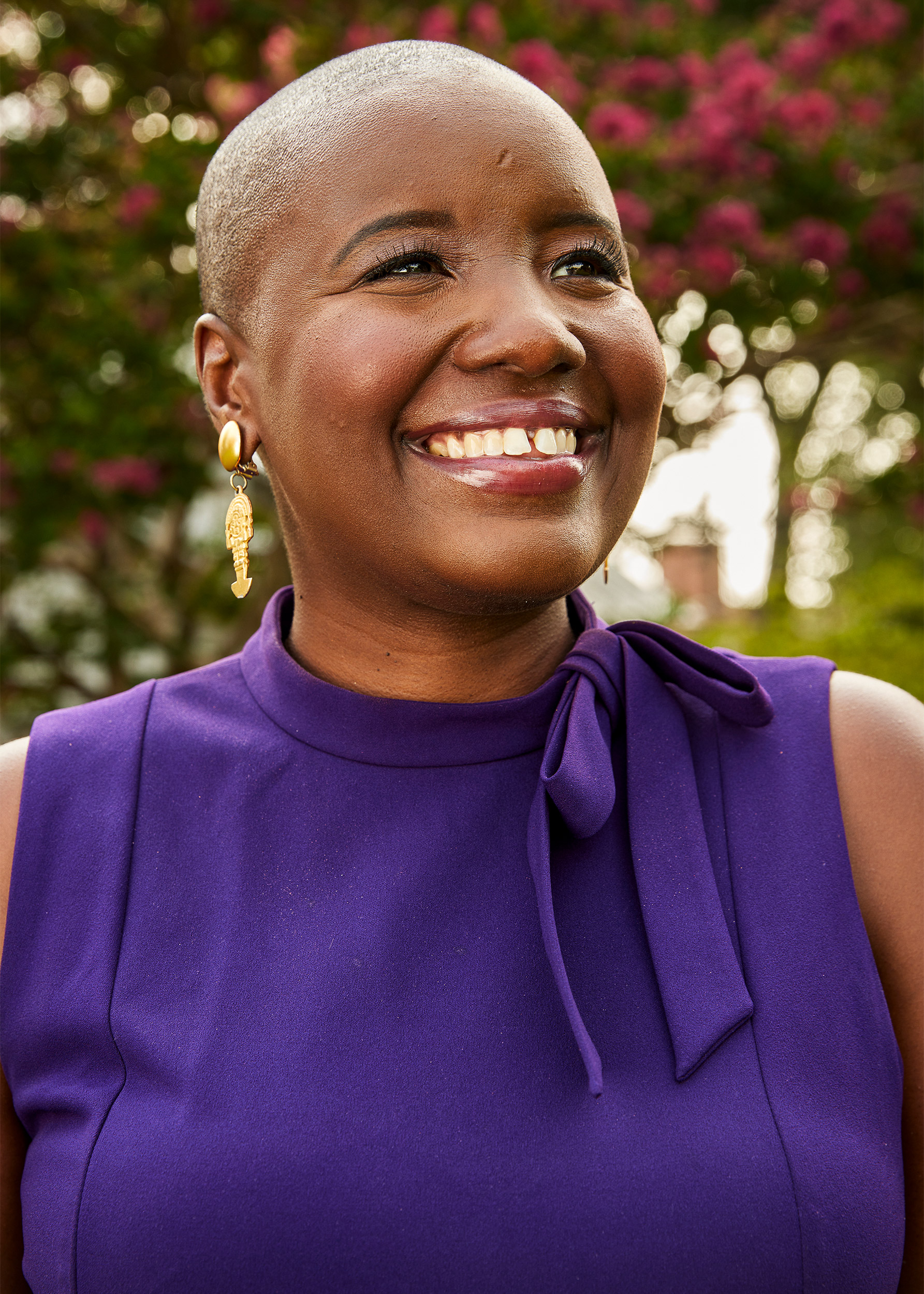Putting Black culture on the map — of historic places
Preserving past Black experience is the next frontier of environmental justice, says historian Jocelyn Imani

“I want to ensure there are more places where Americans — specifically Black Americans — can take their families and leave feeling proud,” says Jocelyn Imani of the Trust for Public Land.
Joseph Smith/Trust for Public Land
Only 3 percent of the sites listed on the U.S. National Register of Historic Places currently focus on the experiences of Black American history and culture. Jocelyn Imani, Black history and culture director at the Trust for Public Land, wants to remedy that, and is part of the effort to preserve such sites.
At a Harvard Extension School forum on Feb. 28, Imani joined Lindi von Mutius, director of the HES Sustainability and Global Development Practice Graduate Programs, for a discussion that addressed Imani’s work as a community conversation. The forum was broadcast from the Division of Continuing Education’s studio.
This interview, which was conducted following the Harvard event, has been edited for length and clarity.
Q&A
Jocelyn Imani
HES: Your passion for elevating the significance of Black culture in American history through place-making is palpable. How did you come into this work, and in your own words, why is it so vital and urgent?
IMANI: As a Black studies scholar, historian, and conservationist, I have always described myself as a community member and a storyteller. Historic places tell our stories and connect us to the truth in tangible, relatable ways. … Places have the power to inspire, transport, to ground us in our humanity. But the places we protect as a nation indicate what we value, and Black history has been undervalued for far too long.
HES: How do you see your work transforming the way Black Americans are represented in the outdoors, as well as increasing the number of sites dedicated to telling the stories of Black Americans?
IMANI: Even at parks and places meant to commemorate Black history, that narrative is often presented from a white perspective while the Black experience is offered as a side note. And often, they situate the Black person as a survivor, which taps into a racist trope of Black people being able to endure inhumane levels of pain as the victim or subject. It’s a depiction that opposes the reality of my Black life and the lives of however many billions of Black people live in the world. I wake up thinking about love and joy. I think about who I will be today, and how I challenge myself. I think about which ways I’m going to pursue my freedom and dreams.
These and other elements of Black life are what’s missing in our nation’s landscape in terms of the sites preserved and the stories told. We have an enormous opportunity to tell a much fuller history that highlights the spirit, courage, and determination of African Americans as agents in their destiny. But the window of time to work with the aging generation is closing, so we’re urgently working to document their stories and preserve these spaces before they disappear due to decay, underinvestment, or rapid development.
“The places we protect as a nation indicate what we value, and Black history has been undervalued for far too long.”
HES: Why do you see this work as a new frontier in environmental justice?
IMANI: This work is so exciting because it sits at the intersection of many important facets —Black studies, conservation, restorative and environmental justice, and equity. Parks and public lands improve our lives in tangible ways — they improve our health, they help address the harshest impacts of climate change, and they foster a deeper sense of community. They also create economic benefits — the MLK National Historical Park is Atlanta’s largest draw for tourism. If environmental justice — both as a concept and a movement — can fulfill its promise of delivering environmental good to those who have historically been denied it, then protecting open space that is significant to Black communities must be part of that movement.
HES: What is your vision for expanding this work, and how can people and their communities get involved?
IMANI: I want dots on the map. I want to ensure there are more places where Americans — specifically Black Americans — can take their families and leave feeling proud. And we have so many inspiring projects that I am excited about. We need sustained investment and support for this work — from local, state, and federal government actors and foundations. There is also an essential role for the corporate giving community. We need help identifying these sites and more analysis on the sites already preserved to understand how the stories are being told within the sites to prioritize sites and stories that center the narrative on Black voices.
There are many ways for individuals to get involved. Start by exploring our work at [The Trust for Public Land] www.TPL.org, and check out other sites across the country. I’d also love to see members of the Harvard community share this conversation and learn more about Black history and cultural sites by visiting the places we’ve protected thus far. More information can be found at https://www.tpl.org/blog/parks-honor-black-history.





